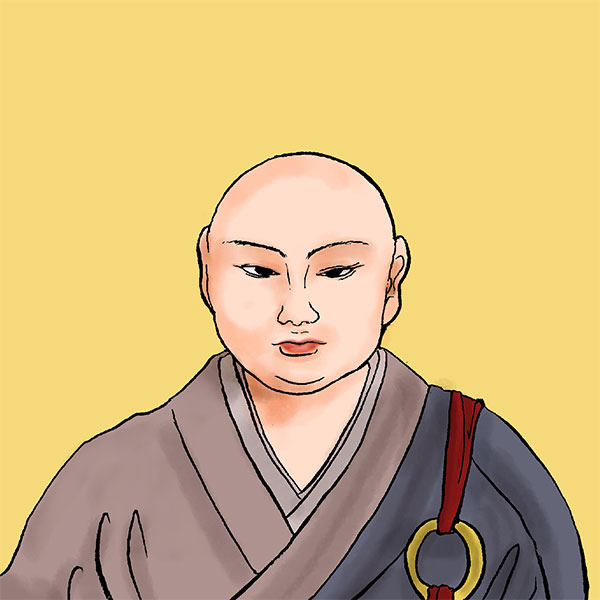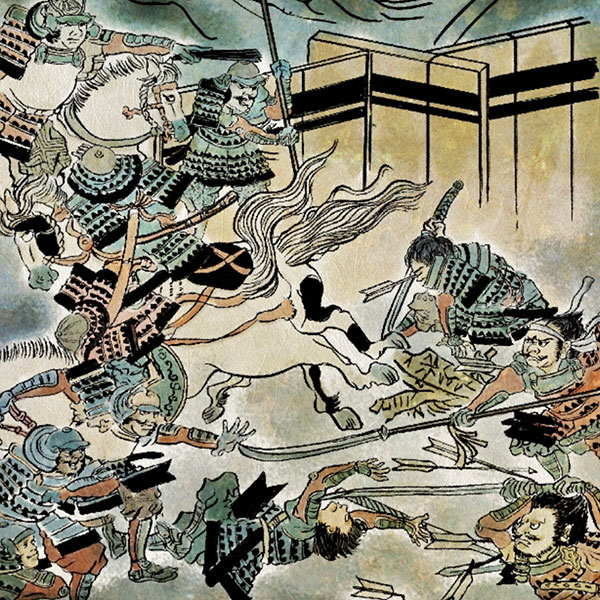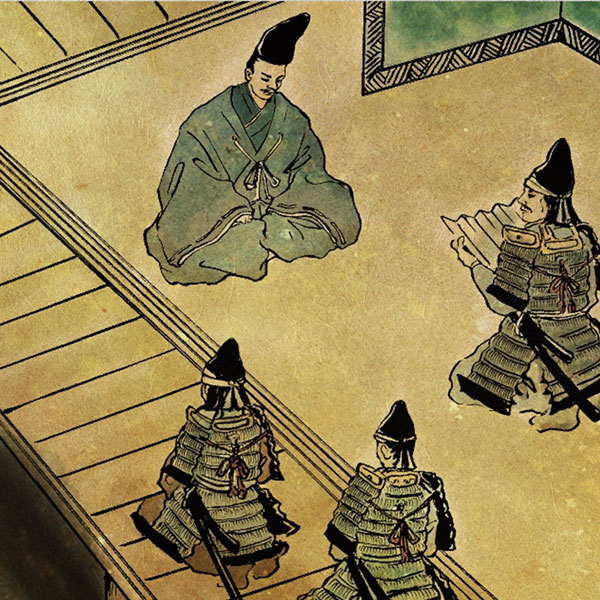Tomiko Hino (1/2)The Shogun's Kitchen and the Woman Who Became a Mother

Tomiko Hino
- Article category
- biography
- name
- Tomiko Hino (1440-1496)
- place of birth
- Kyoto
- Related castles

Nijo Castle
- related incident
During the Muromachi period, the power of the shogun gradually weakened and the shogun's vassals came to have more power. Among them, Tomiko Hino wielded great power as the legal wife of the 8th shogun, Yoshimasa Ashikaga, and the mother of the 9th shogun, Yoshinao Ashikaga. Although she is known as one of the three greatest villains in history, she lived a turbulent life that could never be dismissed as a villain, as she often acted with the Muromachi Shogunate in mind. This time we will introduce Tomiko Hino's life.
What is Hinoya?
In 822, Iemune, the grandson of Fujiwara no Uchimaro's son Midsummer, built Hokaiji Temple in Hino, Uji District, Yamashiro Province (Fushimi Ward, Kyoto City), which was his territory, and placed a small statue of Yakushi Nyorai there. I enshrined it.
Since then, generations have believed in this Yakushi Nyorai, and in 1051, his descendant Shiyo rebuilt Yakushido, which was also known as Hino Yakushi, and later became the family temple of the family school whose founder was Shiyo. The company's name also changed to ``Hino.''
It is said that Shinran, the founder of the Jodo Shinshu sect of Buddhism, who was born in 1173, was the son of Arinori of this family.
The Hino school developed Confucianism as a family business for generations, and became established as a family tradition after the Insei era. Most of the top officials were Chunagon, but Toshimitsu, who was given an important position by Emperor Fushimi during the Kamakura period, was the first to rise to the rank of Gon Dainagon, establishing himself as the direct descendant of the Hino school. Suketomo, who is famous for his active participation in the Shonchu Incident, which was Emperor Go-Daigo's plan to overthrow the shogunate by force that was discovered in 1324, was Toshimitsu's son, but his father was a senior vassal of the Jimyoin line. However, he was disowned by his father because he dared to serve Go-Daigo, a branch of the Daikakuji line. Similarly, Toshiki, who served Godaigo and participated in the Motohiro Rebellion, which was a further plan to overthrow the shogunate in 1331, was from a branch of the Hino school.
When the Kenmu Restoration collapsed and the confrontation between Takauji Ashikaga and Emperor Go-Daigo became decisive, leading to a military conflict, Kentoshi Sanboin (son of Shunkitsu), a member of the Hino family, became Takauji from Kogonin of the Jimyoin line. In response, he mediated the decision of the Imperial Household to pursue and kill Yoshisada Nitta.
This led to a connection between the Hino family and the Ashikaga family.
The Hino family, which was highly valued by Emperor Gokogon, who was supported by Takauji after the collapse of the Shohei dynasty, had many branches such as Uramatsu, Karasuma, and Hino Nishi during this period when the establishment of branch families of court nobles was slow. Created by the house. After Nariko and Yasuko (from the Uramatsu family), who were the kitchens of the 3rd Muromachi shogunate, Yoshimitsu Ashikaga, it became customary for the shogun's legal wife to come from the Hino school, especially from the Uramatsu family, and Eiko, the 4th generation Yoshimochi's legal wife. , Muneko, the legal wife of the 6th Yoshinori, Tomiko, the legal wife of the 8th Yoshimasa, Shounin (real name unknown, Katsumitsu's daughter), the legal wife of the 9th Yoshinori, Ako, the legal wife of the 11th Yoshinori, and the Shogun's kitchen for 6 generations. We are producing Yoshimi's legal wife Ryoko, who was once considered to be Yoshimasa's successor, is also Katsumitsu and Tomiko's younger sister.
From birth to marriage and the outbreak of the Onin War
Tomiko Hino was born in 1440. His father was Shigemasa Hino, a Kurodo Ujoben, and his mother was Naeko Kitakoji (Zenni Kitakoji), a junior third rank. His siblings include older brothers Katsumitsu, Eitoshi (father-in-law of the 11th Shogun Yoshizumi Ashikaga), Shiji (adopted son of Kaneoki Hino), and younger sister Yoshiko (Yoshizumi Ashikaga).
Yoshimasa's birth mother, Shigeko Hino, was Tomiko's great-aunt, and she was from the Hino family, which was related to the Ashikaga Shogun family of the Muromachi Shogunate.
Tomiko became the legal wife of the 8th shogun Yoshimasa Ashikaga on August 27, 1455, at the age of 16, and her first child was born on January 9, Choroku 3 (1459). He died young at home.
Assuming that the cause of this was a curse placed on Yoshimasa's wet nurse, Ima-sanburoku, she was exiled to an island off the coast of Lake Biwa (she committed suicide on the way), and Yoshimasa's four concubines were also banished.
Tomiko gave birth to girls one after another in the third year of the Kansho era (1462) and the following year (1463), but was unable to give birth to a male heir.
In 1464, her husband, Yoshimasa, converted his younger brother Yoshihiro, who had entered Buddhism, to secular life, changed his name to Yoshimi Ashikaga, and appointed Katsumoto Hosokawa as his guardian and successor to the shogun.
However, in the following year, 1465, Tomiko gave birth to Yoshihisa, who would later become the ninth shogun, and Tomiko plotted to support Yoshihisa, whom she adored.
Yoshihisa's guardian, Sozen Yamana, and his family, the Hino family, were in conflict with Yoshimi, and this was complicated by conflict between Katsumoto and Sozen, two powerful figures in the shogunate, and the issue of succession to the Shiba clan and Hatakeyama clan. The Onin War broke out.
Onin War
Tomiko was on the side of the Eastern Army with Katsumoto Hosokawa as its commander-in-chief throughout the war, but at one point she lent large sums of money to feudal lords from both the Eastern and Western armies, and also speculated in the United States. It is said that he had assets worth as much as Yen.
Around 1471, rumors spread that she had an affair with Emperor Gotsuchimikado, who had taken refuge at Muromachi-tei (Kamigyo Ward, Kyoto City). The cause was that Emperor Go-Tsuchimikado was having a hand in Tomiko's maid at the time, but it is said that the relationship between Yoshimasa and Tomiko was so cold that such rumors were spread.
In 1473, Sozen Yamana and Katsumoto Hosokawa died, Yoshimasa retired, and Yoshinao became the 9th shogun after coming of age, and his older brother Katsumitsu Hino became the new shogun. Yoshimasa completely lost interest in politics and in 1475 built Ogawa Imperial Palace (Horikawa, Kamigyo Ward) and moved there by himself.
After Katsumitsu died in 1476, Tomiko became the actual leader of the shogunate.
It is said that the line of people delivering Hassaku gifts to Tomiko, who was said to be ``Odai Ichiten Gosai'', reached one or two towns long. When Muromachi-tei burned down in November, he moved to Ogawa Gosho, where Yoshimasa lived, but in 1481, Yoshimasa moved to a mountain villa in Hase Shogoin (after that, he lived separately from Yoshimasa for a long time).
In 1477, the Western army finally withdrew, bringing an end to the war in Kyoto.
Ends the Onin War and assumes power as the mother of the shogun.
How did Tomiko settle the Onin War? First, she reconciled the brothers Yoshimasa Ashikaga and Yoshimi, who had a falling out.
- related incident

- WriterTomoyo Hazuki(Writer)I have loved history and geography since my student days, and have enjoyed visiting historical sites, temples and shrines, and researching ancient documents. He is especially strong in medieval Japanese history and European history in world history, and has read a wide range of things, including primary sources and historical entertainment novels. There are so many favorite military commanders and castles that I can't name them, but I especially like Hisashi Matsunaga and Mitsuhide Akechi, and when it comes to castles, I like Hikone Castle and Fushimi Castle. Once you start talking about the lives of warlords and the history of castles, there's a side of you that can't stop talking about them.





